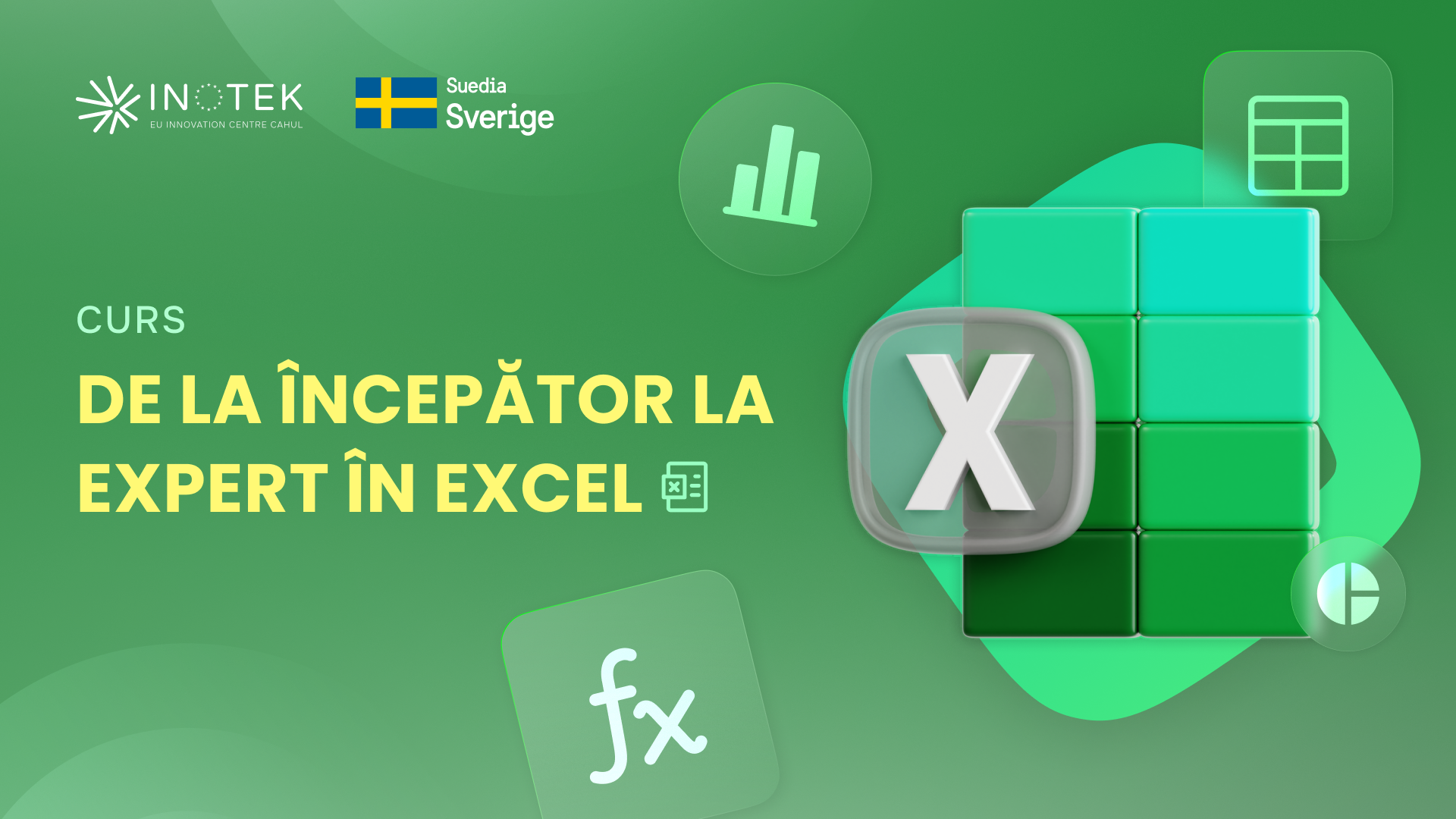Overview
Today, Excel is an incredibly in-demand tool, and a lack of knowledge in this area can hinder your ability to optimize your professional activities.
The course is built on real-life examples inspired by practice and business environments. It is designed to meet the current demands of public officials, entrepreneurs, and professionals who want to improve workflows, increase productivity, and manage data effectively.
This program combines the most popular spreadsheet tools – Microsoft Excel and Google Sheets – and offers practical solutions for real-world needs in the public and private sectors. Whether you need to create efficient reports, analyze data, or automate repetitive tasks, you'll discover applicable and valuable methods.
Methodology:
- Exercises and demonstrations;
- Practical applications;
- New and advanced techniques and concepts.
Who is this course for?
- Public officials managing large volumes of data who want to simplify reporting processes.
- Entrepreneurs looking to manage their businesses more efficiently, reduce errors, and improve decision-making.
- Professionals from various fields needing modern skills in data analysis, organization, and visualization.
- Beginners or intermediate users aiming to learn the best practices for working with spreadsheets.
Why is this course relevant?
In a digital era, the ability to work with spreadsheets is an essential skill in the job market. This course covers the basics of Excel and Google Sheets while introducing advanced functions and modern techniques, including AI integration for analysis and prediction. You’ll save time, enhance work quality, and add value to your professional activities.
Through this course, you will gain a combination of foundational and advanced knowledge in an accessible, structured format, ready to apply in your daily tasks.
Course plan
- Differences and similarities between MS Excel and Google Sheets.
- The application interface: ribbon, tabs, quick access toolbar.
- Essential concepts: cells, worksheets, workbooks.
- Quick navigation methods and using shortcuts.
- Organizing data for efficiency: grouping and multiple copying.
- Entering data from various sources.
- Custom lists and series.
- Numeric, stylistic, and conditional formatting.
- Setting up data validation to prevent errors.
- Practical exercise: creating an organized workbook to track a project.
- Basic functions: SUM, AVERAGE, COUNT, MIN, MAX.
- Conditional functions: IF, AND, OR.
- Text functions: TRIM, CONCATENATE, UPPER, LOWER.
- Introduction to date functions: TODAY, NETWORKDAYS, DAYS.
- Practical exercise: using functions to generate reports.
- Creating and configuring pivot tables.
- Advanced sorting and filtering of data.
- Creating simple and interactive charts: bar, line, pie.
- Customizing charts for professional reports.
- Practical exercise: analyzing monthly sales and graphical visualization.
- Automatic highlighting of information (advanced conditional formatting).
- Creating templates for repetitive tasks.
- Using the VLOOKUP and XLOOKUP functions to retrieve information.
- Practical exercise: automating human resources records.
- AI functionalities in Microsoft Excel (Microsoft Ideas).
- Generating automated reports with data-based suggestions.
- Integration with Google Sheets for real-time collaborative analysis.
- Using AI APIs (e.g., ChatGPT) for process optimization.
- Practical exercise: using AI to analyze a complex data set.
- Protecting sheets and workbooks: passwords and access restrictions.
- Data security in Google Sheets: sharing permissions.
- Methods for distributing reports (PDF export, link sharing).
- Practical exercise: setting up a secure and shareable workbook.
The course teacher
Pădure Gheorghe
IT teacher, First Teaching Degree.
- Full Stack Developer, freelancer
- Web Professor, First Teaching Degree

 Level
Level  Start
Start  Term
Term  Days
Days  Program
Program  Present
Present  Location
Location  Language of instruction
Language of instruction 

